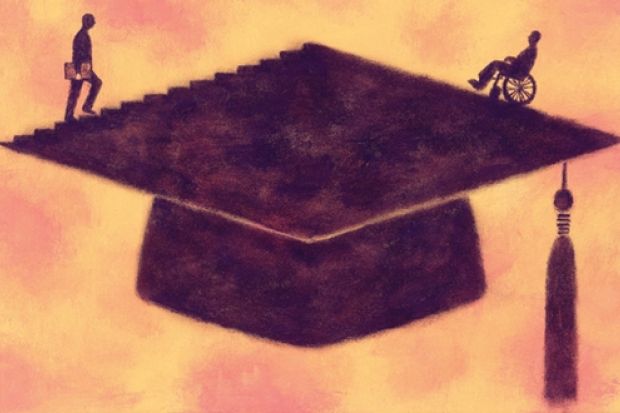One lesson of the Universal Design movement is that when the built environment is made accessible for people with disabilities, everybody stands to gain.
Dropped kerbs and kneeling buses are useful for wheelchairs, but also to the elderly and anyone pushing a pram or a shopping trolley. Closed captioning, developed for those with hearing impairments, is now indispensable in gyms, airports and waiting rooms.
With this in mind, I was intrigued by a lecture on Universal Design Learning (UDL) - which applies Universal Design principles to classroom curricula - sponsored by our local chapter of the US' National Down Syndrome Society. Although I teach and write about disability, I went more as a parent than a professor. My son Henry has Down's syndrome and is approaching school age. I'm trying to learn about curricular innovations that would allow him to be included along with his non-disabled peers.
Proponents of UDL claim that it offers principles for developing curricula that give all students an equal opportunity to learn. Rather than making adjustments on an ad hoc basis, classroom materials are, from the outset, flexible enough so that disabled students can reach the same goals as their non-disabled classmates. Technology is essential: computerised translation programs for English language learners; picture symbols for learning-disabled students; audio files for students with visual impairments. Assignments might be similarly flexible, allowing students to demonstrate their command of materials in the format best suited to their learning style.
In order to maintain consistency and intellectual rigour, UDL mandates clearly defined "learning outcomes", coupled with assessments to determine whether students have attained them. Its advocates say that all students benefit from more flexible, diverse and purposeful curricula.
As Henry's parent, I'm enthusiastic about the promise of UDL. But the talk also made me reflect on my work as a teacher at an elite research university, where my colleagues and I think very little about "different learning styles".
At our highly selective institution, we often proceed as if the quirky learners were weeded out in high school. I know I'm not alone in sometimes feeling that my students emerge from the womb able to do close readings and parse literary style. Given the right chemistry, a seminar of English majors flows like an enlightened reading group - that is, until the distressing discovery that some of the most eloquent can't write a sentence. Or make an argument. Others, who said little all semester, produce unexpectedly brilliant projects. The upshot is that even the best and brightest students absorb and process information in different ways.
It strikes me that UDL could be as useful at an Ivy League university as it is for an elementary school. Of course, the challenges are greater. It's impossible for me to isolate the goals of an assignment as a third-grade teacher might be able to do. When I teach close reading, I want students to analyse a poem's formal and thematic contents, organise their thoughts into an argument supported by textual evidence and convey it in lucid and well-structured prose. English majors need to write papers, an assignment that simply can't be fulfilled by a multiple-choice test or artistic rendering. Moreover, my colleagues and I value our intellectual freedom far too much to accept standardised "learning outcomes" by which administrators could assess the quality and significance of our teaching.
I also realise that, intuitively, I already use many UDL techniques. I know my students understand a subject better if it is presented to them in multiple ways. When I teach literary minimalism, I assign fiction by Raymond Carver, Ann Beattie and Sandra Cisneros, but I also show slides of art and architecture, and play recordings of minimalist music. I give take-home exams because the results are better if students can go at their own pace in an environment of their choice.
On further investigation, I've discovered that universities in many parts of the world are already applying UDL principles. In higher education, it is seen as a way to accommodate students with disabilities as well as international students, veterans and the elderly. I suspect that UDL appeals most to institutions with larger or more diverse student bodies than my own, but that doesn't make it irrelevant to my pedagogy. I take seriously the wisdom of universal design, that accommodating people with disabilities can benefit us all. Developing clearer goals, more flexible methods of presentation and perhaps even allowing multiple means of expression can help all our students - and doubtless their professors, too.
Register to continue
Why register?
- Registration is free and only takes a moment
- Once registered, you can read 3 articles a month
- Sign up for our newsletter
Subscribe
Or subscribe for unlimited access to:
- Unlimited access to news, views, insights & reviews
- Digital editions
- Digital access to THE’s university and college rankings analysis
Already registered or a current subscriber?
